USS CONSTELLATION MODEL
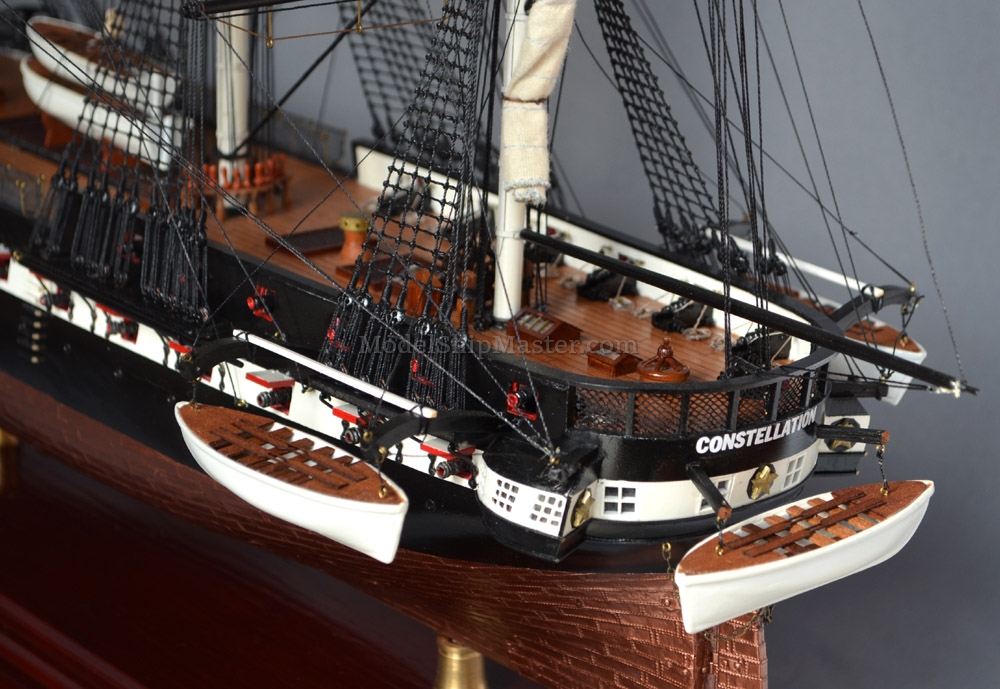
USS Constellation was a
38-gun frigate, one of the "Six Original Frigates"
authorized for construction by the Naval Act of 1794.
She was distinguished as the first
U.S. Navy vessel to put to sea and the first U.S. Navy
vessel to engage and defeat an enemy vessel.
Constructed in 1797, she was modified several times in
succeeding decades, and finally rebuilt beginning in
1853 as the sloop-of-war USS Constellation (1854).
After realizing that the
fledgling United States could not match for size the
navies of the European states, Joshua Humphrey designed a diagonal scantling (rib) scheme to limit
hogging and included extremely heavy planking. This
gave the hull greater strength than conventional
frigates. The new design gave the USS Constellation tall
ship the ability to overpower other frigates, but with
the speed to escape from powerful ships of the line.
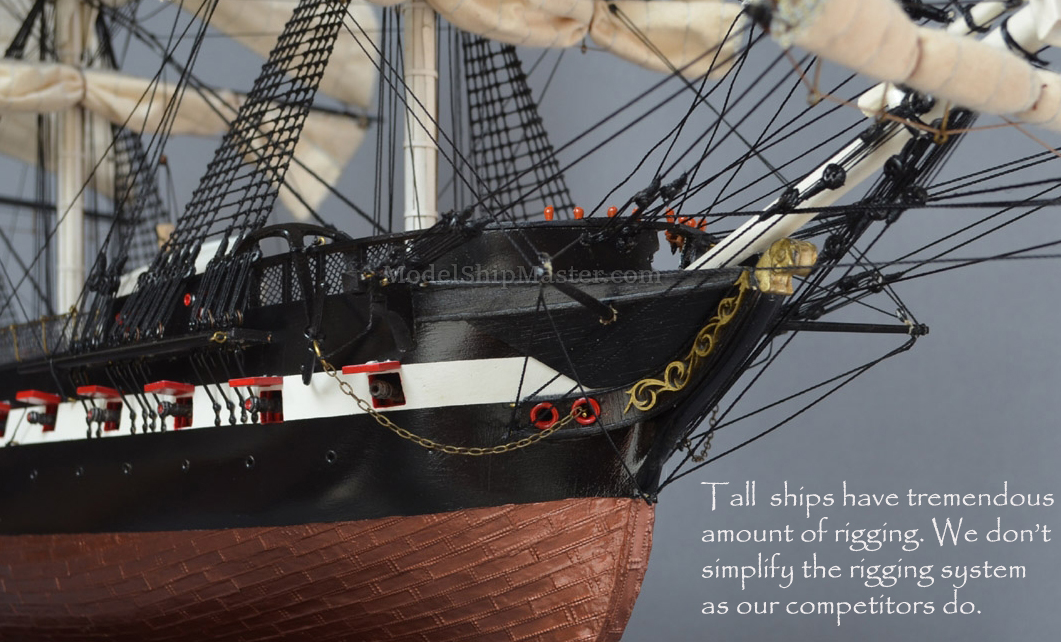
USS
Constellation convoyed American merchantmen at the
outset. Under the command of Captain Thomas Truxtun, she
sailed for the Caribbean in December 1798. Subsequently,
on February 9, 1799, the Constellation captured a French
40-gun frigate, L'Insurgente. In a hard-fought victory,
she brought her prize into port. The capture of the
French frigate was the most notable event of the Quasi
War with France. The well-disciplined and well-trained
crew gained a masterful victory in this first battle
test of the new frigates of the US Navy.
In the
succeeding months, Constellation additionally
encountered and seized two French privateers, Diligent
and Union.
On the
evening of February 1, 1800, the Constellation engaged
with a 52-gun frigate, the Vengeance, in a lengthy,
furious battle. Vengeance twice struck her colors and
was close to sinking. However, with a stroke of luck,
Vengeance utilized the darkness of the night to escape
from the USS Constellation, who was unable to pursue
further because of the loss of her mainmast.
In May
1800, USS Constellation additionally gained more
recognition for recapturing three merchantmen.
Except for
brief periods under repair, Constellation's career
through the mid-point 19th century proved varied and
colorful. From November 12, 1819 to April 24, 1820, she
served as flagship of Commodore Charles Morris on the
Brazil Station, which entailed protecting American
commerce against privateers and supporting the
negotiation of trade agreements with South American
nations.
On July
25, 1820, she sailed for the first time to Pacific
waters where she joined the Squadron of Commodore
Charles Stewart. For two years, USS Constellation
protected American shipping off the coast of Peru, an
area where that erupted into revolt against Spain. In
1827, Constellation acted as flagship for the West India
Squadron. She participated in a twofold mission
involving the eradication of the last of the pirates and
the interception of slavers operating in the area. In
August 1829, she cruised to the Mediterranean to watch
over American shipping and to collect indemnities from
previous losses suffered by U.S. merchantmen. En route
to her station, she carried the American ministers to
France and England to their posts of duty.
During the
1840's, USS Constellation circumnavigated the globe.
Serving as flagship to Captain Kearny and the East India
Squadron in March 1841, her mission was to safeguard
American lives, property against loss in the Opium War,
and enable negotiation of commercial treaties.
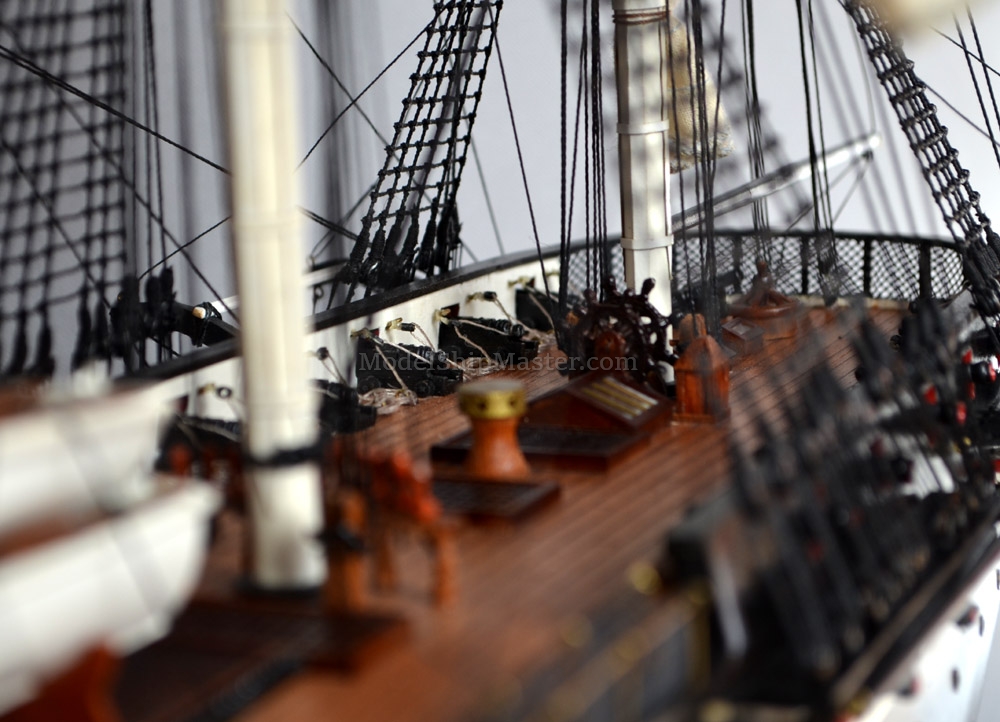
In 1853, USS Constellation was
struck and broken up for scrap at the Gosport Navy Yard
in Portsmouth Virginia. At the same time, the keel was
laid for what became known as the sloop of war USS
Constellation (1854). By the 20th century, the 1854
version was widely believed (including by the U.S. Navy)
to be the 1797 version. In the latter half of the
20th century, the city of Baltimore continued to promote
the ship as the original, but some naval historians
understood the ship to be an 1854 sloop-of-war rebuild
of the original frigate, using a number of original
parts. Commemorative copper coins were struck from
parts of the USS Constellation, and have become
collector's items.
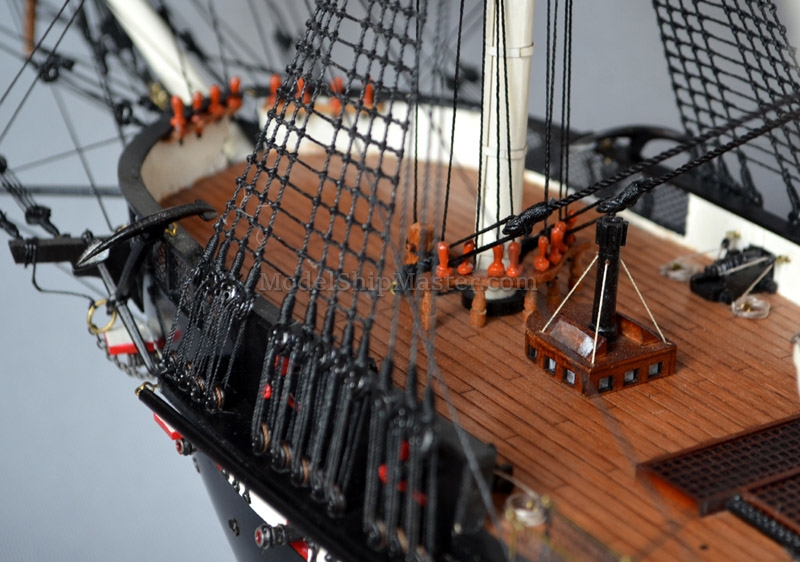
About the construction of the
USS Constellation model:
- Built from scratch over
hundreds of hours by master artisans
- The boats are real wood, with real
planks. We are the only one who stays true to the art of
tall ships
- Plank-on-frame construction.
-
Copper-plated bottom:
individual copper pieces (no fake lines.)
-
Blackened metal cannons and wooden carriage.
Under the main deck, all guns are "real" guns which
have proper barrels and wooden carriages which sit on 2
real decks under the main deck. These
guns are not simple barrels inserted into a solid hull
like in a cheap model.
- Authentic extensive rigging system comprised of many
different sizes of rope and features numerous blocks and
deadeyes
Dimensions and price of
the USS Constellation
model:
36" long x
27" tall x 13" wide
27" long x
27" tall x 13" wide
Contact us for prices.
Click on this link for
lead time.
Add light feature to delight your guests in a dimly lit
room: $300. Powered by a
standard 9v battery under the base, with on/off switch.
This option is only
available on the larger model.
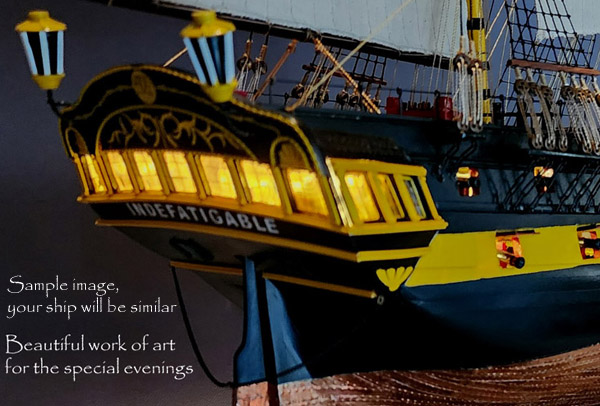
Click here to learn more
about the tall ship USS Constellation:
https://en.wikipedia.org/wiki/USS_Constellation_(1797)